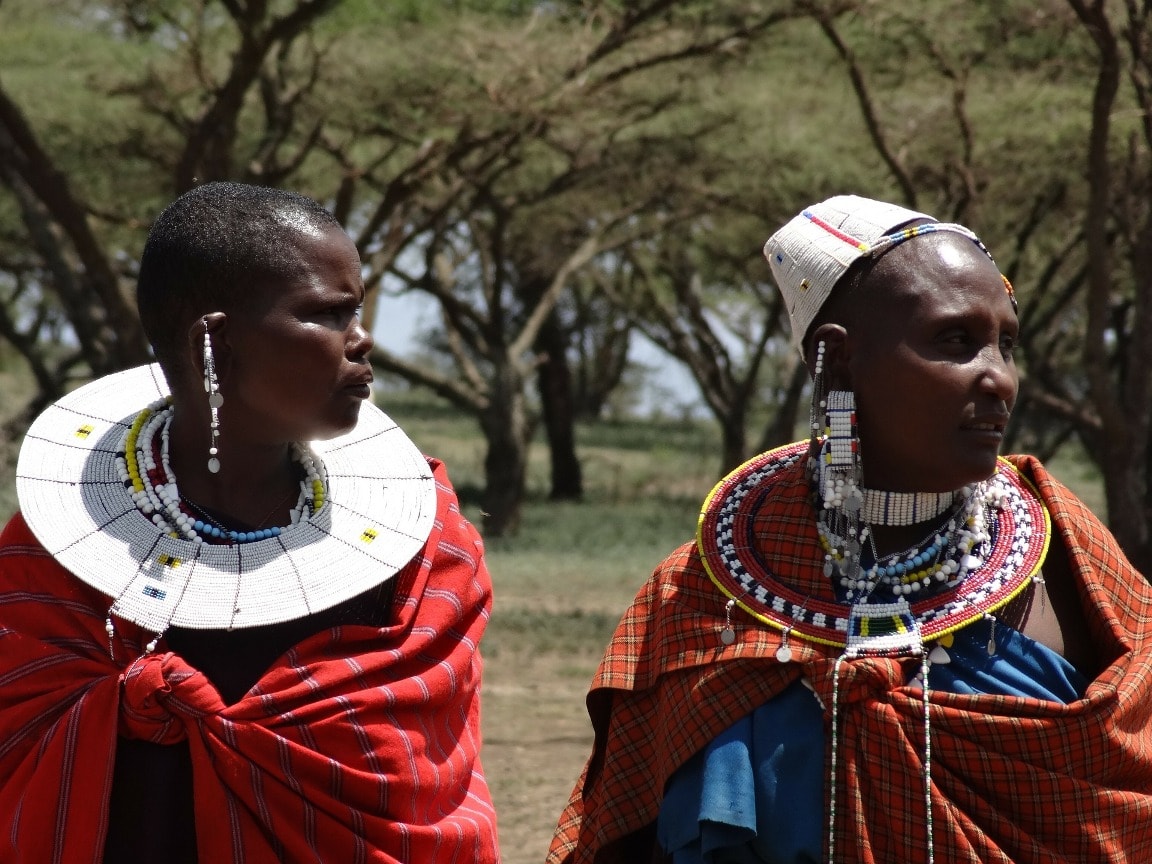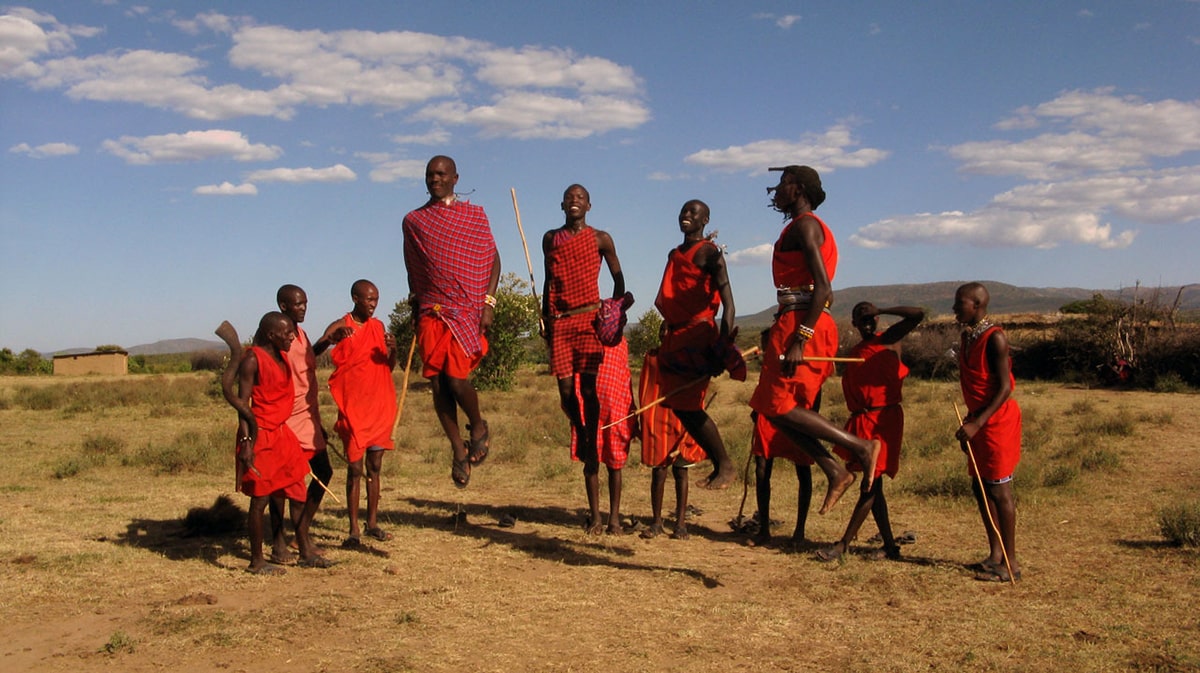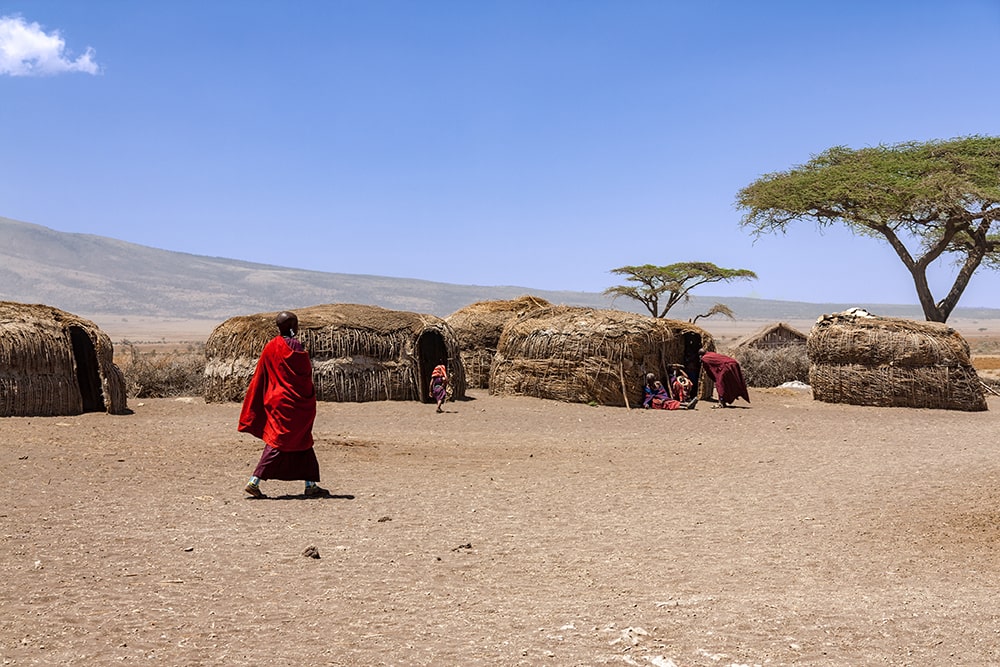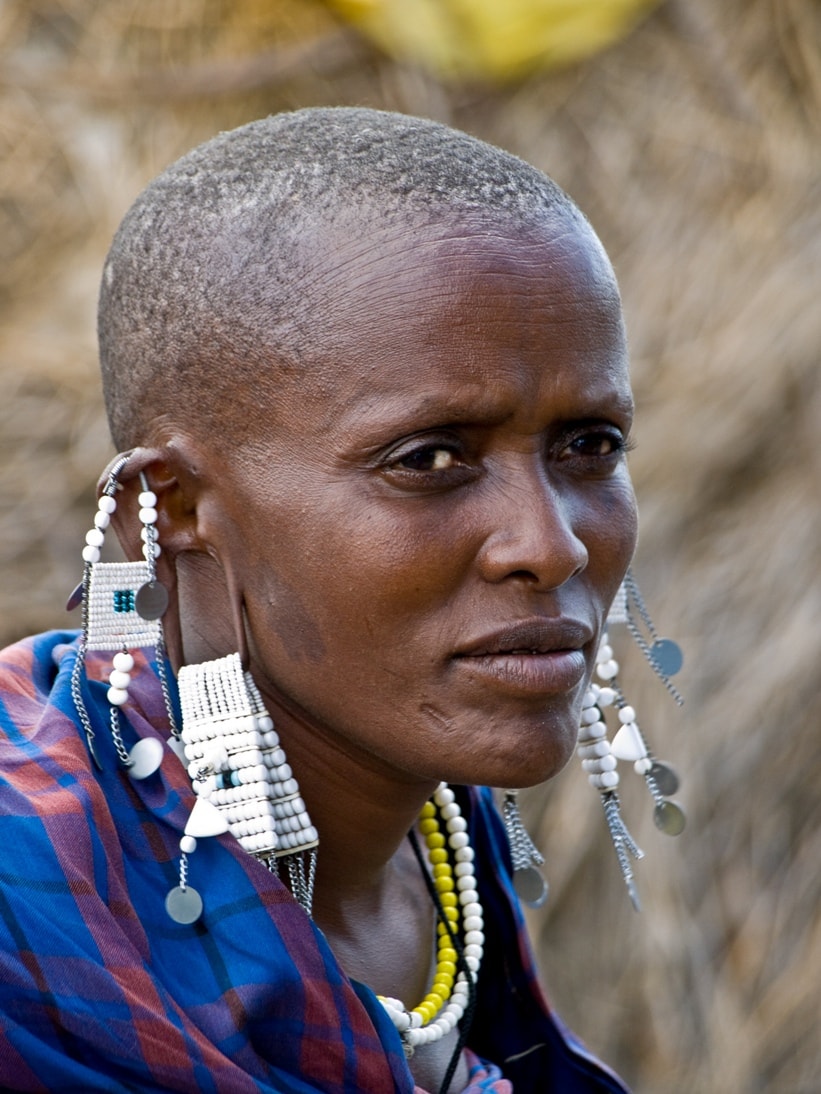What is the purpose of going on a vacation? Most of you will say go sightseeing, but one thing that often gets overlooked is the cultural experience!
Africa encloses a vast spectrum of cultural diversity. Many different tribes are living on the African continent, and by far, the Maasai tribe of Africa is the most sought-after by tourists.
So, for those of you who never heard of the Maasai tribe, I have outlined some fascinating facts about the Maasai people to give you a better understanding of their cultures, traditions, and lifestyles.
Who Are the Maasai People?
As the name suggests, the Maasai people are a Nilotic ethnic group and come from the Nile Valley.
Nowadays, the Maasai people can be found mainly in southern Kenya and northern Tanzania, nearby some of the most famous National Parks and Reserves, including the Amboseli National Park and the Nairobi National Park in Kenya, as well as the Serengeti Park, the Tarangire National Park, and the Ngorongoro Crater in Tanzania.
The Maasai tribe is semi-nomadic and well renowned for being the cattle herders of Africa and worthy warriors.

The Maasai population is estimated to be over 800,000 people, most of whom live in Kenya.
The Maasai people speak Maa as well as English and Swahili, the official languages of Kenya and Tanzania.
The Maasai tribe can be further divided into 12 geographic sectors with their own customs and dialects.
The Maasai society is very patriarchal, but there is no leader per se. Instead, a group of elders is responsible for making all the decisions concerning the tribe. They also have a full body of oral law.
The Maasai people worship one God called the Enkai. The Laibon is believed to descend from the Enkai. The Maasai diviner (Laibon) assumes many roles in the Maasai society, such as spiritual and ritual leader, prophet, and healer.
The Maasai society structure relies solely on the age set, including boys, warriors, and elders. The age-set structure only applies to the Maasai men of the tribe.
The men are raised to become warriors. A man’s wealth is determined by the number of cattle he owns and the number of children he has!
The Maasai people are polygamous.
Rites of Passage
The Maasai people believe that the rites of passage ceremonies or rituals are meant to test their courage and endurance to pain.
I will only describe here the most important rituals of the Maasai tribe: the Emuratta, the Eunoto, and the Orngesherr ceremonies.
Emuratta Ritual – Boys
Around the age of 14-16 years old (during puberty), one of the first rituals that take place is called the Emuratta, where the boy is circumcised to symbolize the passage from boyhood to warriorhood.
One of the elders performs the circumcision. No anesthetics or medications are administered during the procedure! Furthermore, the boy must remain silent during the operation to avoid bringing dishonor to his family since this is a test of courage!
The healing period is usually 3-4 months. The boy must wear black clothing for 4-8 months after the circumcision. Once fully recovered, he is now ready to begin a new stage in his life: warrior.
The Eunoto Ceremony
The Eunoto ceremony takes place about ten years after the circumcision ceremony. This ritual is also known as the “coming of age.” The festivities last for ten days, where there is a lot of singing and dancing. The warriors perform a dance called the Adumu dance or the jumping dance.
The Moran (junior warrior) is not allowed to marry and start his own family. After the Eunoto ceremony, the junior warrior becomes a senior warrior, and now, he can get married.

The Orngesherr Ceremony
The last age set in the Maasai society is the elder stage. After the completion of the Orngesherr ceremony, the senior warrior becomes a junior elder. Every man receives the elder’s chair as part of the ritual.
Emuratta Ritual – Girls
As for the women, there is no age-set structure, but there is one ritual that women must undergo to move from childhood to adulthood: excision (circumcision).
The girls go through the circumcision ritual during their puberty, but in their cases, it is referred to as excision or “female genital mutilation”! Once the young girls have been circumcised, they are now eligible for marriage. They will marry older men, usually in their thirties (senior warriors). After the excision, the girls wear black clothing for a few months.
As you can imagine, this genital mutilation has been criticized worldwide, and rightfully so! As a result of the pressure from the international community, both Kenyan and Tanzanian governments have adopted laws that make it illegal to practice Emuratta on young girls.
In recent years, the Emuratta ritual, which underlines the passage of girls from childhood to adulthood, has been substituted by another ceremony called “cutting with words,” where singing and dancing have replaced the mutilation!
Lifestyles
Diet
For the Maasai tribe, the center of their universe is their cattle, their main source of food as well as materials for making utensils, shelters, and clothes.
The traditional Maasai diet is composed of meat, milk, blood, fat, honey, and tree bark. However, nowadays, their diet also includes maize-meal (rice, potatoes, and cabbage).
Now, don’t worry, the blood is not part of their daily diet! The Maasai people will drink blood only on special occasions, like, for instance, after giving birth, as part of certain rites of passage ceremonies, or when they are sick.
Shelter
The women of the tribe are in charge of building the houses known as “Inkajijik,” which have a rectangular shape.
The materials used for the structure include; timber poles and lattices of branches, which are covered with mud, sticks, grass, cow dung, and human urine.
The village is called Kraals. Each house is placed to create a circular shape and surrounded by a wall made of acacia thorns to keep the wild animals away from their cattle.

The Warriors are responsible for building the fence, also known as Enkang, as they are in charge of the security of the community.
Maasai Fashion Style!
Clothing
Before the 1960s, the Maasai people were wearing animal skins like calf-hide and sheepskin wrapped around their bodies. Since the sixties, animal skin has been replaced by cotton cloth, and their clothing is known nowadays by the name of Matavuvale.
The Maasai people love bright colors. Their favorite color is by far, red. However, their wardrobe is not limited only to red clothing; it also contains blue, black, striped, and checkered cloth.
The sandals are the footwear of choice, often made of cowhides. However, in recent years, as a result of the influence of modern civilization, the soles of the sandals are now made of tire strips or plastic!
Piercing and Jewelry
One of the first things you noticed about the Maasai people is the ear piercing. Different materials are used to pierce and stretch the ear lobe, including thorns for piercing, twigs, stones, and even empty film canisters to extend the ear lobe!
Both men and women wear ornaments, such as wooden bracelets and bead jewelry.
The color of the beads has a particular meaning. For instance, the white represents peace, the blue refers to water, and the red stands for blood, bravery, and warrior status.
Hair
The Maasai people shave their heads to mark the passage from one stage of their life to the next.
Only the warriors have long hair. As part of the Eunoto ritual, the Warriors shave their heads to indicate a change in their status.

Conclusion
The Maasai tribe has an impressive cultural heritage. Most of the Maasai people are found in Kenya and Tanzania. Many villages are bordering some of the most famous National Parks and Reserves, such as the Amboseli National Park, the Masai Mara Reserve, the Serengeti Park, and the Ngorongoro Crater.
The Maasai tribe structure relies solely on the existence of age sets. The rituals are of the highest importance to the Maasai people since they are designed to test their courage as well as their endurance to pain.
The cattle constitute the livelihood of the Maasai tribe and are a measure of a man’s wealth along with the number of children he has!
If you are interested in a genuine cultural experience and want to learn more about the day-to-day life of the Maasai people, read my full review by clicking here.
If you have any questions or would like to share your thoughts about the Maasai tribe of Africa, please leave a comment below. I will get back to you promptly.
Hi Sonia, what a wonderful article about this fascinating tribe. I am glad to hear that the Massai have been able to keep their rich cultural traditions alive. Do you know by any chance why it is important to them to pierce their ears? What is the meaning behind it? I also wonder if the tourism like frequent visits to their villages has an impact on their daily lives?
Cheers Anke
Well, it is part of their culture to alter their physical appearance. They have been doing it for thousands of years! The Maasai people are very fond of jewelry. So by doing these piercings, they can wear as much jewelry as they want!
Yes, unfortunately, tourism impacts their daily lives. The Maasai people have been affected by modern civilization. They are very mercantile nowadays. They are looking to make money by selling their arts and pieces of jewelry to tourists. It has been reported that in some cases, they can exert undue pressure on tourists to sell their products!
If you are interested in learning more, you should read my full review about a cultural experience with the Maasai people by clicking here.
Thanks.
Oh wow, I had no clue that we had such a fascinating tribe still living on earth. I do agree that their culture is so rich and I am happy to see that these traditions remain intact. I’d love to plan a trip to go meet them, do you know who can help me plan such an excursion? Thank you.
If you are interested in meeting the Maasai people of Africa, read my full review called local living in Kenya, here. It’s a safari package from G Adventures where you can immerse yourself in an authentic Maasai village in Kenya.
Hi Sonia,
What a lovely article about the Maasai tribe! I love traveling, and Tanzania is one of the countries I wish to visit, along with Vietnam. I always watch documentaries on the National Geographic channel about Africa and dream of going on an African safari adventure one day.
I would like to know if we need to be vaccinated and, if so, what are the vaccinations that we need? I know about the presence of malaria on the African continent and that we need to take some medications :).
Because, one of my friends went to Africa and had malaria! It was a nightmare for her, but, this had no deterrent effect since she went back to Africa! So I am pretty sure she had a splendid time:)
Thank you very much for this excellent blog.
Daniella
Yes, you need to get vaccinated if you plan to travel to Africa. For instance, if you are thinking of going to Tanzania, you will need to get vaccinated for yellow fever. Moreover, you must bring your proof of immunization. Otherwise, you will not be allowed to enter Tanzania.
If you want more information about the vaccinations, check my post about travel tips for an African adventure here.
Furthermore, the immunizations required vary considerably among African countries. So you should check with your local travel clinic to find out which vaccinations you need for your trip.
Hope it helps.
Hi Sonia,
This is a great article! I learned so much about the Maasai tribe since there were many things I was totally clueless about, such as the fact that the Maasai tribe of Africa, first originated from the Nile Valley region.
I like the fact that the Maasai tribe live a simple life and rely solely on nature for their subsistence! They are not polluting the environment as we, the urban people, do.
Keep up the good work and I’m looking forward to reading more about the African tribes and their cultures.
The Maasai tribe of Africa are amongst the last remaining tribes of Africa that haven’t been influenced by modern civilization and offer tourists a rich cultural experience of a lifetime, and I think that is awesome!
Wonderful article! My wife is very into vacationing with the intent to engage in the culture. This was a wonderful read and I will look forward for more content from you! Thanks for sharing! Have you personally visited this tribe? If so, what was the most memorable experience you had?
I haven’t visited the Maasai people. However, I hope that I will get the chance to see them one day because they are fascinating people with a rich cultural heritage.
Very interesting post. It is difficult to believe that some people still live by these types of rules and rituals in this day and age.
The circumcision of young boys has received so much bad press in South Africa of late that it is surprising that it is still allowed to continue. Many boys have died from infections after the fact and I am very surprised it is still legal in some countries.
Very interesting read and I am definitely going to bookmark your site for future school projects that come up.
Thanks for bookmarking my post. For things to change, it will take time and education. This could take a few generations before we start seeing some changes. Therefore, I don’t think that the circumcision for boys will stop anytime soon since it is part of the Maasai people’s culture as a rite of passage from childhood to adulthood.